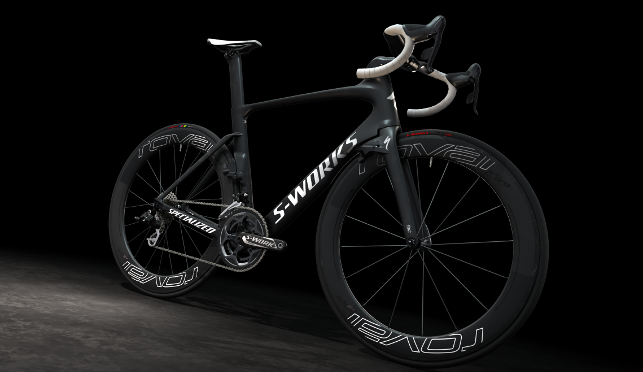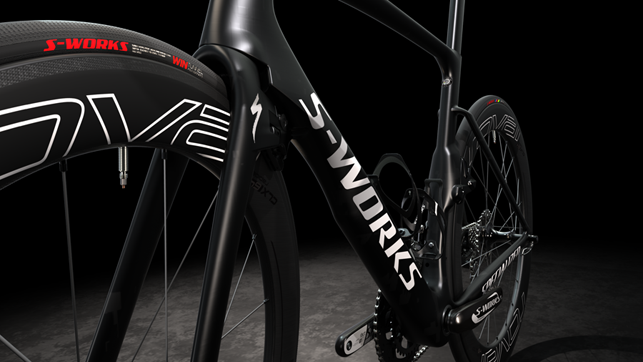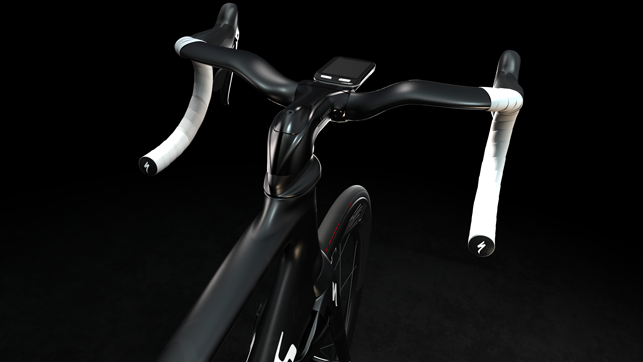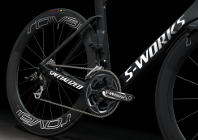
For its Venge road bike Specialized commisioned an immersive animation, that lets the viewer get as close to the bike as Tour de France rider Mark Cavendish
When the team at Specialized started to think about how to promote the company’s latest pro road bike, Venge, they knew that a promotional video would do a perfectly adequate job of telling the story.
It could showcase, for example, the extensive wind tunnel tests and honing of lightweight materials and feature testimonials from pro cyclists – but Specialized was looking for more than that.
The company loves video, but what it wanted to deliver was an entirely new type of online experience, one that made potential customers sit up, take notice and, ideally, spread the word.
“They wanted the typical bike customer to tell their friends: ‘Hey, check this out!’. Not just the new bike, but the link [to this experience],” says Mike James, principal designer at creative imaging studio Thomas Burke and Others (TB&O).
What was needed, he said, was something in which a bike enthusiast sitting in front of their computer screen could play an active role, something that they could manipulate themselves, something that would enable them to feel in control.
So TB&O put together a mock-up of an idea they’d been weighing up for a while: using a CAD model of a bike found on GrabCAD to create a virtual-reality animation in which the viewer would be immersed and placed firmly in the ‘hero shot’.
The camera, meanwhile, would swoop in on different parts of the bike, enabling them to control the speed with a simple one-direction, click-and-drag button.
As soon as they heard the plan, the team at Specialized was hooked. A meeting was soon set up between TB&O and the team behind the Venge and everyone gathered in the boardroom around a prototype model of the bike.
They pieced together a storyboard, depicting how the video would flow, and everyone present walked around the bike, filming it on their smartphones.
“It was fun that everybody had this tool in their hands that they could use to become a kind of cinematographer,” says James. But it was useful, too, because it enabled the group to analyse what aspects of Venge they wanted to focus on and understand how a customer might examine the bike in a showroom.

Photographic memories
Photography is TB&O’s specialty. Formed in 1972, the studio has remained at the cutting-edge of technology by adopting digital processes early and building up skills in post-production techniques that have since come to dominate the industry.
It was on a project for mobile phone manufacturer Motorola two years ago that rendering technologies became more integral to the agency’s workflow. Against a backdrop of tight deadlines, producing a series of 28 hero shots and getting approvals from the 60-plus people involved in the project looked pretty unrealistic.
Instead, the team at TB&O worked with Motorola’s product design team on gathering a range of CAD files, build layouts and mock-ups and then using rendering software package Keyshot in order to create depictions of what each proposed photographic shot might look like.
“We said, ‘Let’s do it this way.’ Let’s get all this done in Keyshot, get it all signed off and then shoot [the pictures] to match what we’d done in Keyshot,” says James.
“We literally shot [the project] and delivered it in about a week and a half. That was unheard of. That was the thing that caused us to decide that we really needed to start using this tool.”
The run-up to rendering
Building the CAD model for Specialized was much more difficult, given that the project was still in its R&D stage.
The team at TB&O would receive engineering files almost every day from Specialized, as the bike company tweaked its design.

This ‘Hot Rod’ coloured bike was used by TB&O as a proof of concept to show the client how easily they could change the colours of the bike components in the VR by using Keyshot
In the end, Specialized assigned an engineer to the project, whose role was to find and build parts that were missing in CAD – and if that weren’t possible, then TB&O would create these themselves.
For two months, James and his fellow principal CGI artists, Tim Feher and Dries Vervoort, used SolidWorks and Maya to build up the bike model and set about creating material surfaces that would make it appear real.
Some materials posed a unique challenge, such as the uni-directional carbon fibre, which is naturally irregular and then sprayed black at joints and clear-coated to achieve a matte finish.
Additionally, the tyres were to be created in full from a two-inch swatch of rubber — but because tyres are vital in any bike-design story and had to be perfect when scrutinised, these were built from scratch in Maya.
To create the emotional reaction that Specialized was looking to evoke, the TB&O team had to create an environment that was as simple as it was dramatic.
Rather than relying on an HDRI lighting environment, the team built a transparent set and supplemented the light provided by a custom HDRI environment with 23 lights created from individual pieces of geometry.
The result is dramatic light that highlights the product no matter where in the VR experience the user is.
For the rendering, the team had access to TB&O’s inhouse, 32-core render farm, but for the final render, the project was sent out to a specialist Keyshot render bureau, 3D Off The Page in Wisconsin. It took 56 hours to produce the final piece on a 360-core farm.
This final render in Keyshot allowed the team to produce ready-to-insert HTML5 and JavaScript code, needed to support progressive loading and smooth gesture control for the best user experience.

An advanced understanding
Much of the rendering work done today doesn’t look real, because it’s done by people who don’t understand photography, according to James.
“They haven’t spent twenty to thirty years figuring out how to light a product, find the right camera positions, use the right lens. All of that stuff is really important to creating great, compelling imagery,” he argues.
For TB&O, it’s the software that truly liberates the years of experience of photographers and studio technicians. It works with the digital “zeros and ones”, he says, to make them into compelling images, as close to real photography as possible.
“It’s a product like Keyshot that allows [a company] like us to remain relevant,” he concludes. “It has enough depth in its functionality to let us do anything we can conceive.”
Specialized’s rendering-based approach to bike marketing
Default






